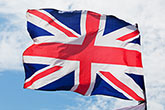Oil prices strengthen after morning scare
Published by Nicholas Woodroof,
Editor
Oilfield Technology,
Oil prices recovered early losses and see gains on relief that international trade remains unchanged, while road fuel demand stands strong despite a spike in Covid-19 cases.
Rystad Energy’s Head of Oil Markets, Bjornar Tonhaugen, has commented on the morning's events:
"If you’re a trader you’re probably thinking what a bizarre market you chose to be in. What statements can you trust and what are the real news you need to price in.
Picking up on all supply and demand indicators is one thing, but getting in the business on filtering and weighting political statements to forecast trade developments, drives the profession to another level.
Markets got a scare yesterday from something not even remotely on trader’s minds: The US-China trade deal. Statements that shook the market proved to be no news and Brent has recouped the losses in early Asian trading this morning.
Prices rose further on the relief that the US-China trade status remained intact and on indications that despite Covid-19 infections increasing, road fuel demand and global traffic are still standing strong.
It remains to be seen if new large-scale lockdown measures will be reinstated, but they have been very painful for economies in the first half of 2020 and affected countries seem to try to avoid them. Avoiding new lockdowns if the pandemic expands further could give oil demand some space to breath.
Now over to real supply news. Iraq has vouched to cut production for July-August to 3.5 million bpd, or 1.3 million bpd below its 2019-average. We remain skeptical this acrobatic feat can be accomplished in such a short time frame.
Iraq plans to cut about 650 000 bpd by state operated fields (Majnoon, Luhais, Tuba, Ratawi and Nahr Bin Umar), BP operated Rumaila, ExxonMobil operated West Qurna 1, Lukoil operated West Qurna 2 and Eni operated Zubair. The ministry has also asked Kurdistan Regional Government to cut their supply by about 100 000 bpd. Whether this will be achieved remains to be seen. In the past, the Kurdistan region of Iraq did not participate in the OPEC cut requirements from the country. Earlier this year, the two governments have met and discussed initial terms and conditions for oil export revenue sharing. However, the two governments have failed to reach a concordant agreement yet. In absence of that agreement and due to increased fiscal debt, it is less likely for the autonomous region to further cut down on its only revenue source.
The ministry pays “curtailment fee” to the IOC operators to meet the quota. The drastic drop in oil prices has worsened the country’s economy. With already increased budgetary requirements to meet the country’s power and reform demands, the curtailment fees could further put pressure on the state budget. This poses long term compliance risk from the country. If oil prices continue to creep higher, risk of slippage increases, not only in Iraq but in other economically battered OPEC exporters.
Other countries are preparing to gradually lift production in July. Saudi Arabia and Kuwait are in agreement to restart both large fields in the shared Neutral Zone, Khafji and Wafra, in July. Overcompliance in June allows for both countries to increase production month-on-month. The news is mostly priced in as Saudi Arabia, Kuwait and UAE are cutting an extra 1.2 million bpd on top of the target cuts in June. And the Middle East tensions resurfaced with Yemeni rebels firing missiles towards Saudi Arabia being a sad reminder that despite coronavirus dominating the world’s agenda these days, geopolitical issues are far from resolved around the world. Complacency in oil trading rarely makes for good trades, so expect volatility to spike back with a vengeance. However, for now, the US$40 level seems supported from a fundamental perspective.
The next hard indicator that will weight on prices is the coming July OPEC+ meeting. It’s the meeting before the end of the deep cuts and an event with authority to make new difficult decisions in case Covid-19 brings again the need for them till then.
There is no expectation at the moment that countries are thinking to extend the deep cuts further, but nobody can exclude such a development if it becomes a necessity.
Till July and under the assumption that US international politics don’t force themselves into the oil trade equation, we expect prices to keep calm and stay between the US$40 and US$45 mark.
Read the article online at: https://www.oilfieldtechnology.com/special-reports/23062020/oil-prices-strengthen-after-morning-scare/
You might also like
Union Jack Oil plc announce resumption of production at Keddington Oilfield
The newly installed equipment and facilities are working well and continue to be fine-tuned to optimise production.

